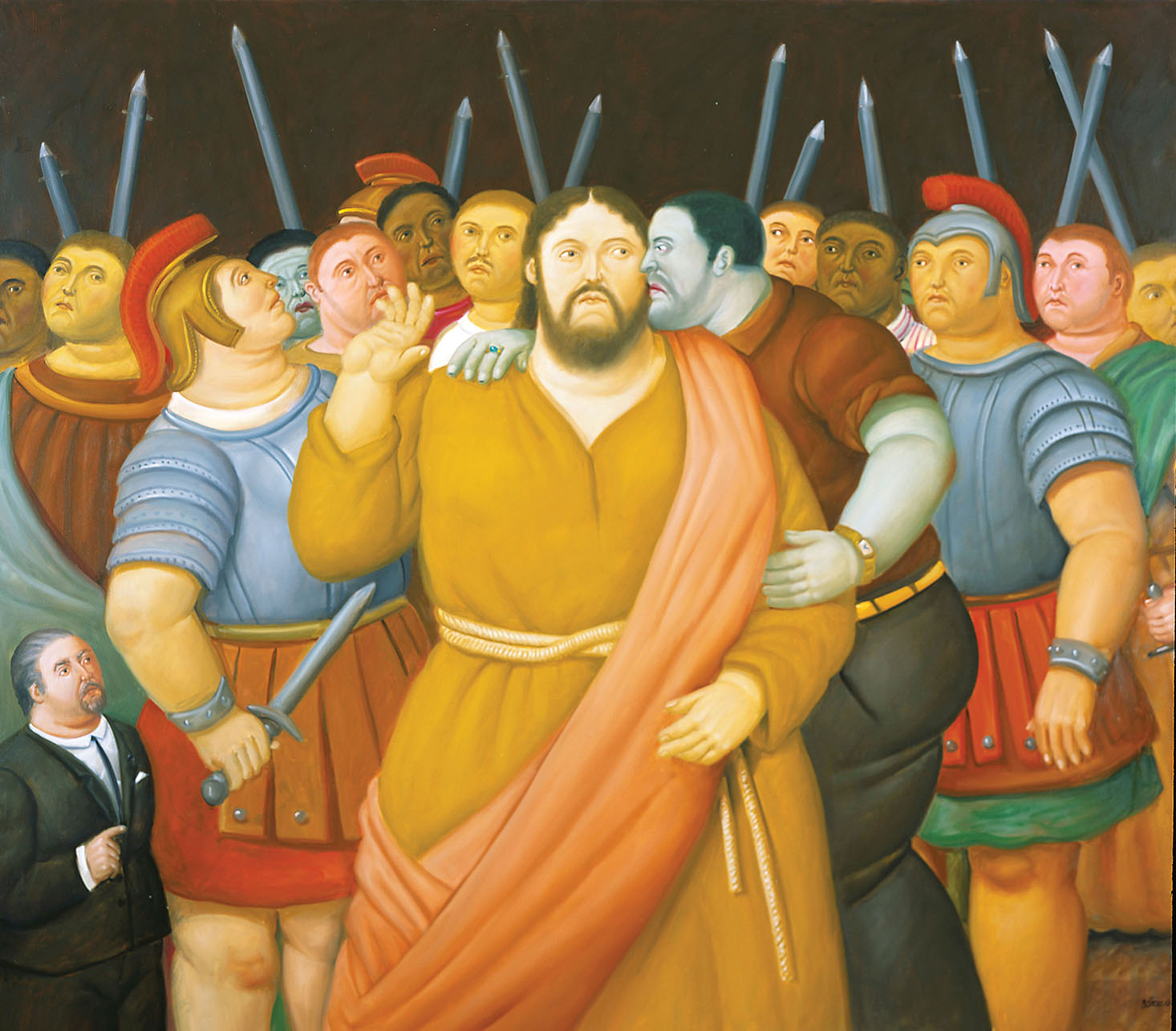Fernando Botero spoke briefly with Beatriz Manz, professor of Geography and Ethnic Studies at UC Berkeley, about his latest series “Via Crucis.”
BM: Why did you choose the Via Crucis as a theme in your latest artistic work? And can you say something about placing these paintings in a contemporary context?
FB: The Via Crucis was the great theme of art up until the 16th century. It gradually began to disappear, and by the time of the French Revolution, it had practically disappeared. Today it is nonexistent. Perhaps that is why I became interested in it.
I am not a religious person, but this theme has a beautiful artistic tradition. In that era, painters mixed daily reality with history: the Roman centurions [of traditional Via Crucis paintings] are soldiers of the epoch in an Italian landscape. I took the same liberty to mix certain Latin American realities with the
biblical theme.
BM: You appear in the painting “The Kiss of Judas.” Can you give me a hint?
FB: That was another tradition — to paint one’s own portrait in the midst of biblical themes. Masaccio [appears] next to Jesus in the Brancacci Chapel of Florence, Pinturiccio in the frescos in Siena and Michelangelo in the Sistine Chapel’s “Last Judgment,” and so on. I put on my Sunday best to appear near Christ. It couldn’t have been any other way.
Translated from the Spanish by Beatriz Manz.

